How to prepare a garden for winter: 10 ways to get your plot ready for the cooler season
It's important to know how to prepare a garden for winter before the first frosts arrive. Here's what to put on your to-do list
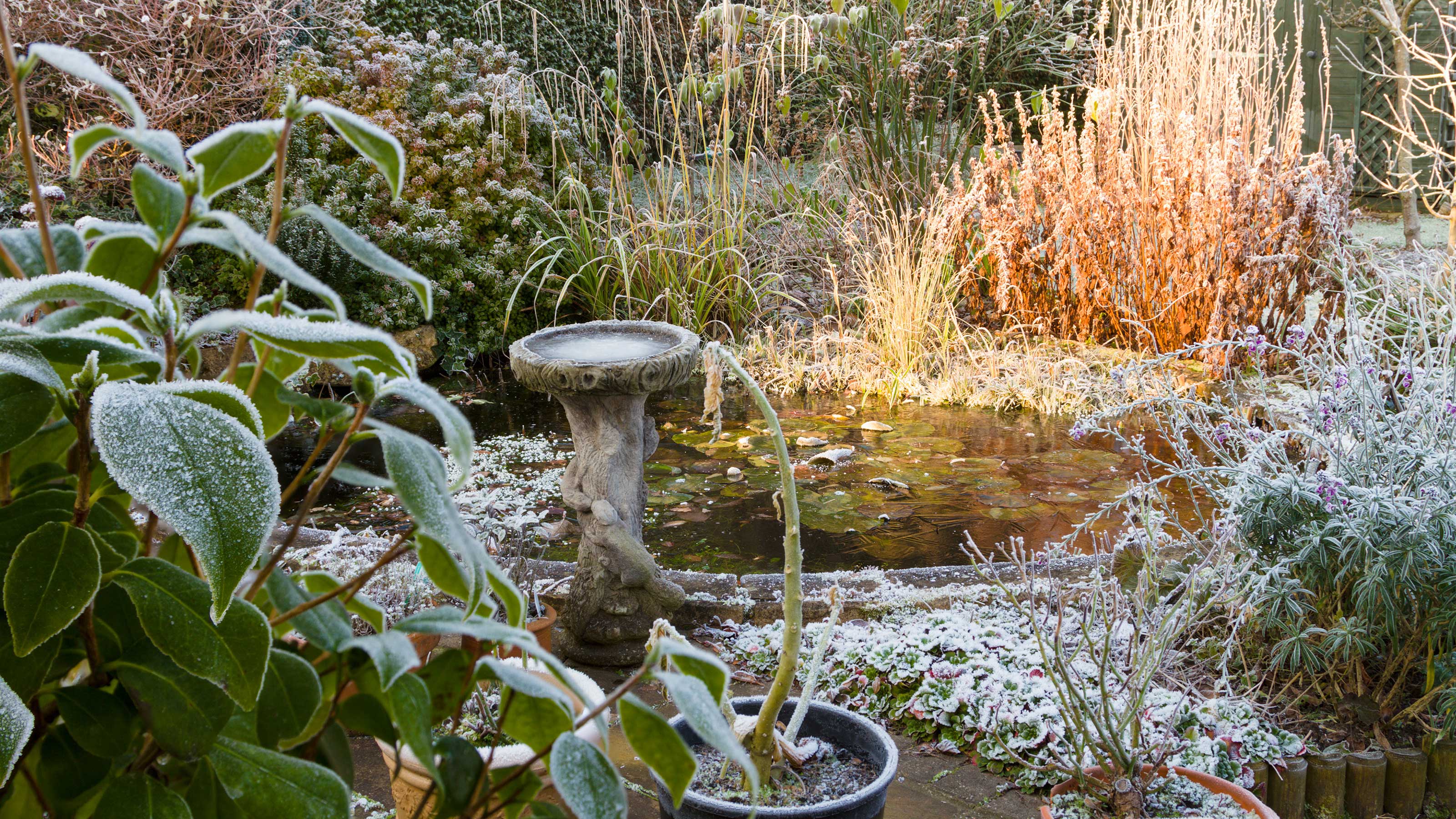
Not sure how to prepare a garden for winter? Late autumn is a great time to learn, before the cooler weather sets in. That way, you can ensure that when spring rolls around, everything will bounce back quickly.
These jobs aren't tricky, but they are well worth doing to keep your plants and garden structures in top condition. From how to protect your shed to what to do with summer bulbs, we've rounded up all you need to know to get your outdoor space ready to face the coldest season.
And, once you've got everything prepared to take on the elements, our winter garden ideas will provide plenty of inspiration to make your plot look beautiful over the next few months.
How to prepare a garden for winter in 10 simple steps
It's easy to learn how to prepare a garden for winter. We explain the key tasks to add to your to-do list below.
1. Check your wooden shed
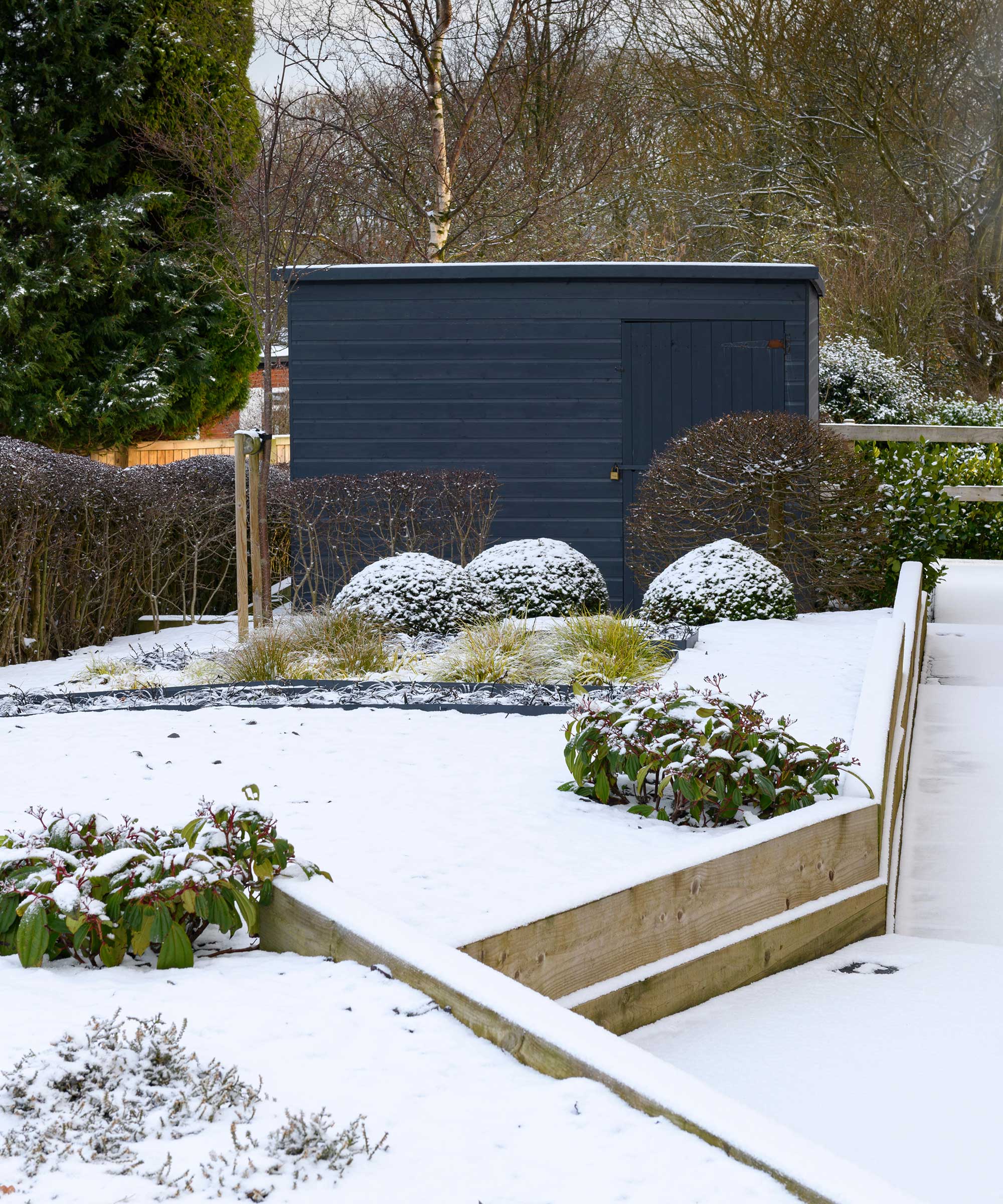
Give your shed a spruce
At this time of year, it's worth giving your shed a little attention. Wood needs treating regularly, so making sure it's fully protected before winter sets in is essential as the cold weather can be damaging. Give it a couple of coats of exterior wood protector or some of the best exterior wood paint.
As well as this, be sure to check the roof for leaks, repair any holes, and give your hinges a squirt of WD-40. You might even need to replace the roof altogether – you can learn how to felt a shed roof with our guide, should this be the case. And, if you have windows, make sure they are looked after too – you don't want damp creeping in.
Finally, check for any overhanging branches that could potentially fall on your shed if the wind picks up.
2. Refresh your compost heap
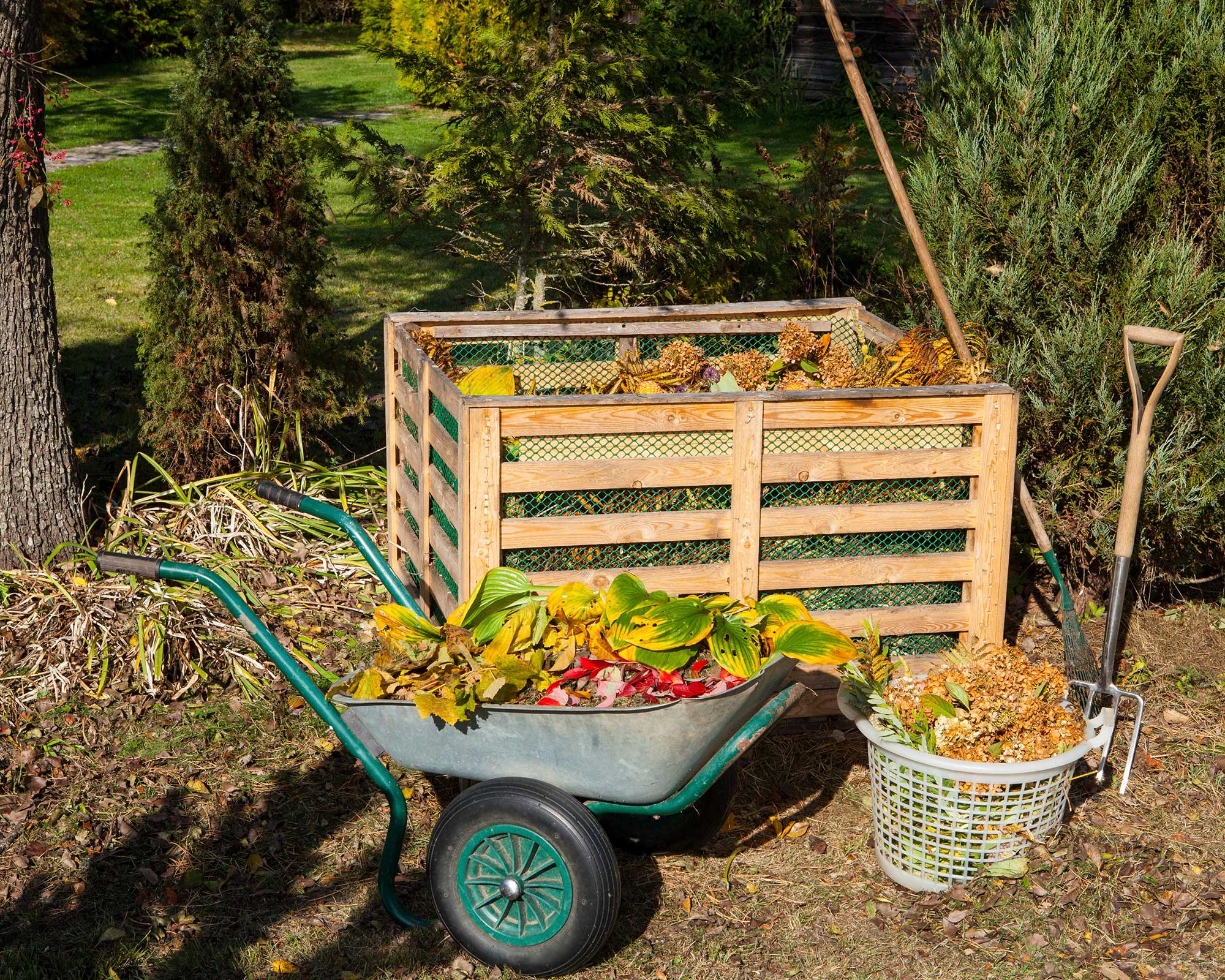
Clean up cleverly by composting
Composting is a great way to save money and recycle waste. And, 'if you already have a compost heap, it's time to renew it ahead of the chilly weather,' says the gardening experts at The Greenhouse People.
'You can start your heap using leftover soil from seasonal pots, fallen leaves and other green waste,' they advise. If you've already got some homemade compost ready to use, 'top up your plant beds, slather it on to your driest soil, and cover any lackluster lawns to make room for the new batch before cleaning up your garden,' they continue. 'This way, all the waste from your big tidy will rebuild your winter stash.'
Don't forget about making lead mould too – a fantastic approach for turning all those swept-up leaves into a garden asset. Our guide on how to make leaf mould is full of practical advice to help you get started.
3. Mulch your borders
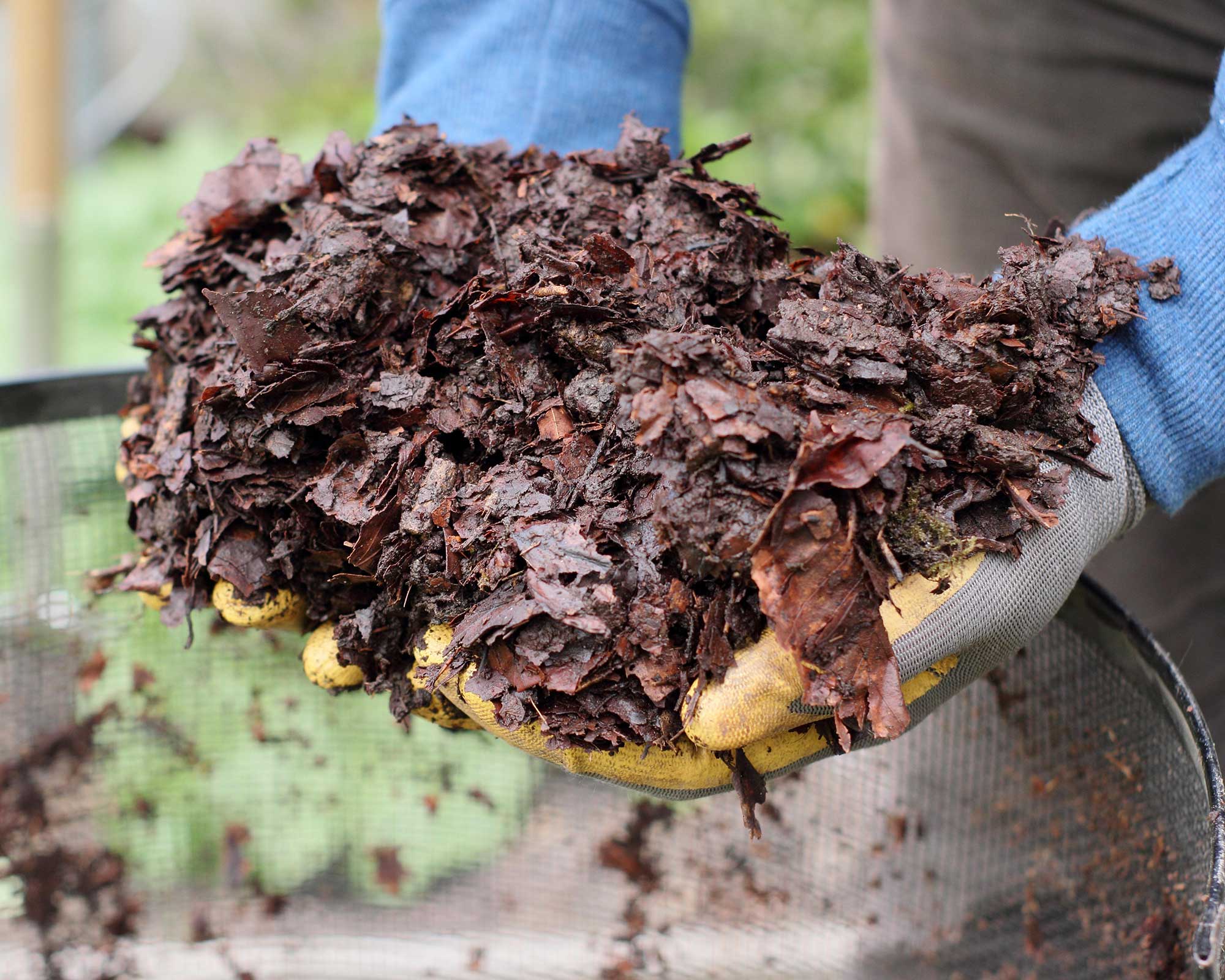
Leaf mould can be used as mulch in the garden
Speaking of compost, when you put your garden beds to sleep for winter, you can give them a helping hand by mulching them.
This is a great way to use up the compost from your heap that has been forming since spring. It acts as a thick layer of protection and if you live in a very cold climate, you can add an old blanket or fleece on top. It also protects from the pounding of rain and keeps the temperature underneath more consistent.
You can find out more info on mulching with our dedicated guide.
4. Cut back your perennials
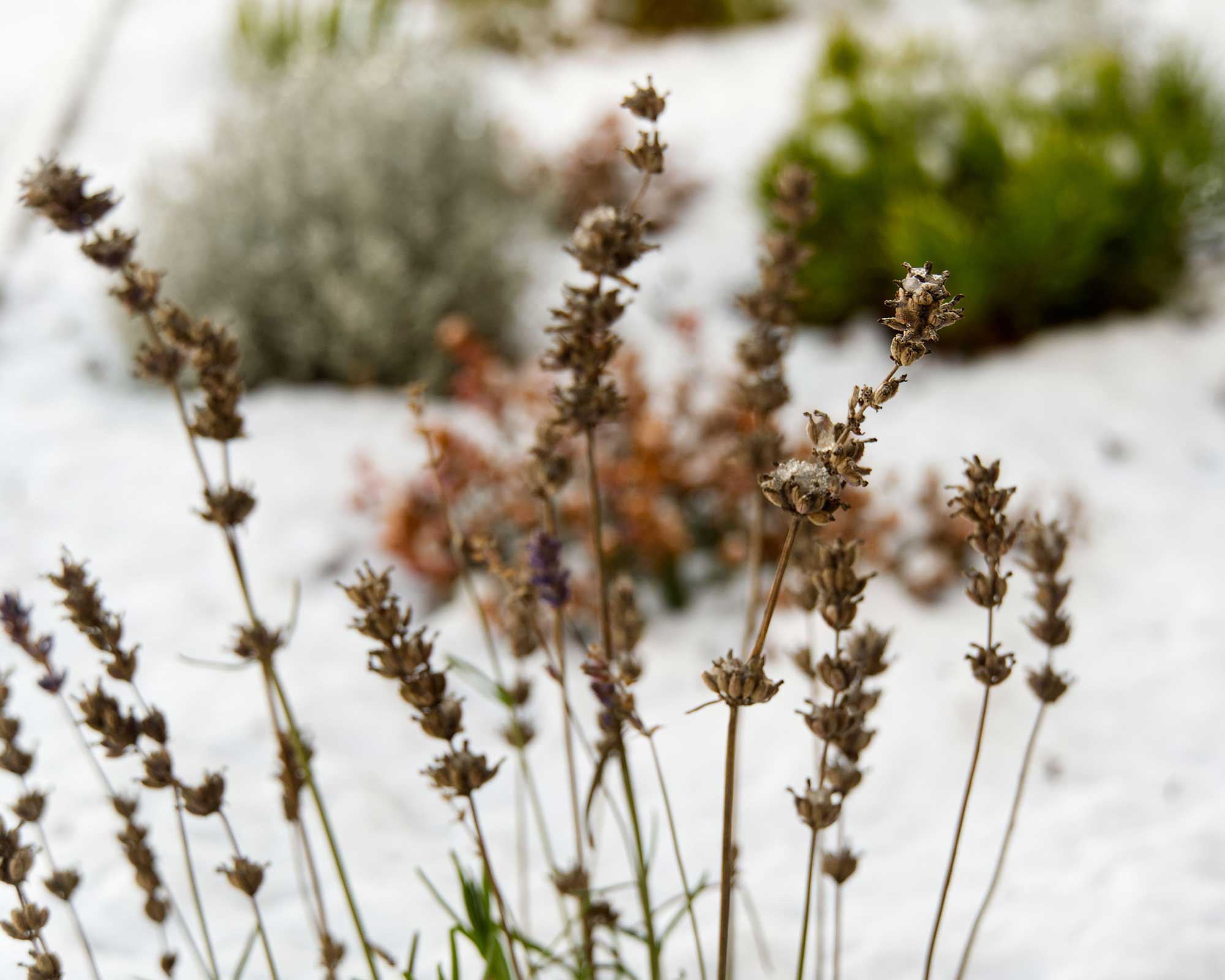
Prune your summer-flowering perennials, such as lavender
You can give straggly stems an instant tidy in late autumn. But, leave the odd seed head, as it will provide food for your wildlife in the colder months.
Perennials like rudbeckia, geranium, phlox, helenium, and lavender will benefit from being cut back, and you can have a quick weed at the same time. For most, giving them a trim back to the crown will help the plants produce fresh shoots in spring. And, this also protects the crown, as dying stems can damage it. However, avoid cutting back into old wood with lavender, as our guide on how to prune lavender explains.
Need some new secateurs for the job? You'll find our top picks in our best secateurs buying guide.
5. Tidy up your tools
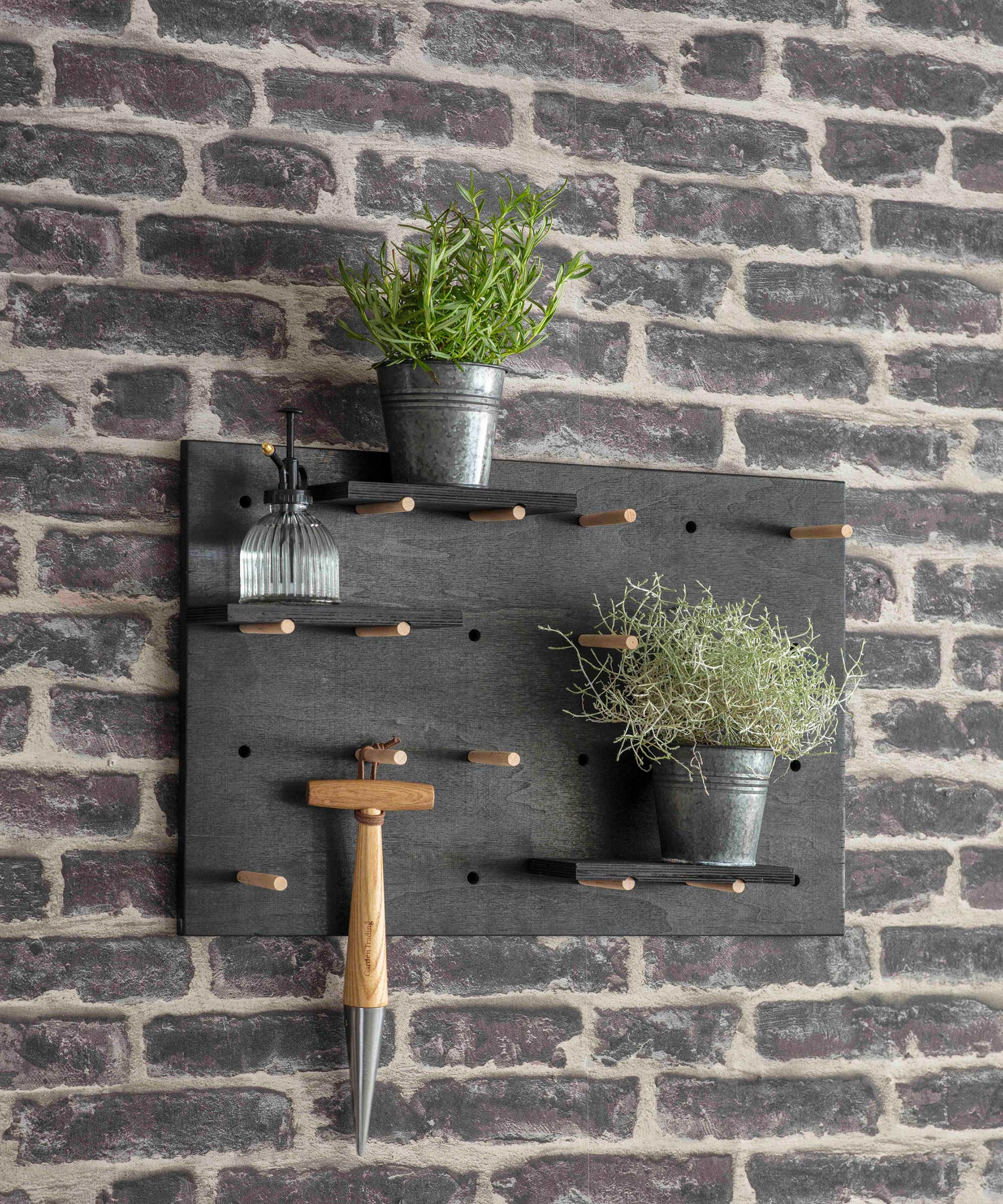
Keep your tools neat and tidy with the Moreton peg board from Garden Trading
The old saying 'what is a workman without his tools?' is so apt for gardeners. We use our tools endlessly during spring, summer, and autumn, so we need to repay them with a little TLC during the winter months.
You can take them to be sharpened and wipe the metal parts of pruners, shears, and secateurs with an oily rag. If your tools have wooden handles, give them a rub with linseed oil.
Finally, invest in some kind of tool storage, a peg board or coat rack will work, and hang them up on there, ready for spring. If you're looking for new garden storage ideas or indeed, garden tool storage ideas, you can find lots in our features.
6. Grab your loppers and get pruning
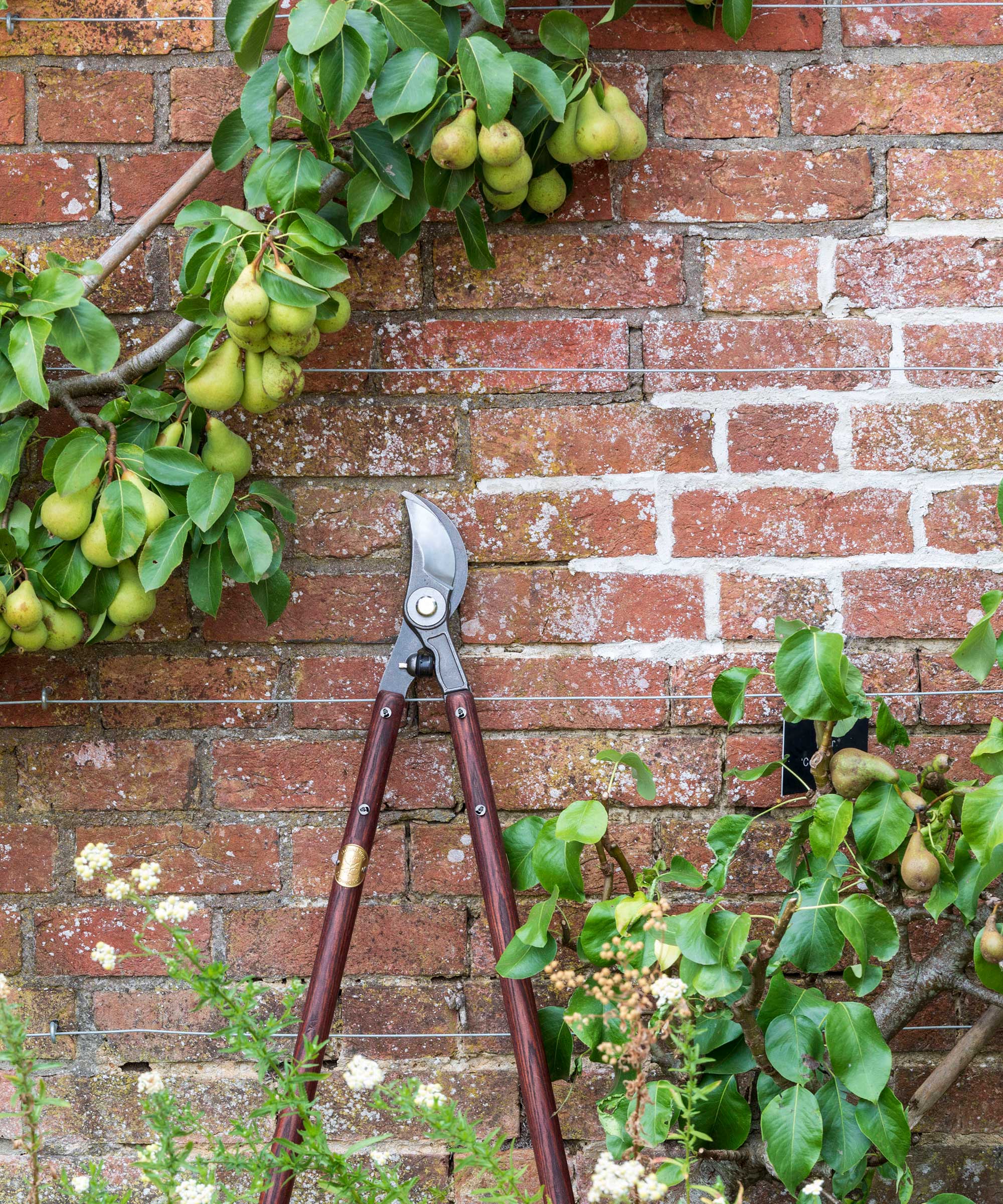
Not everything needs to be pruned ready for cooler weather, but a fair few varieties benefit from a good trim, including some deciduous shrubs and trees. Plus, 'once the leaves have fallen off, you'll be better able to see what you're doing and to get a sense for how big you want your tree to be,' says Calum Maddock, a gardening expert at HomeHow. 'Cutting back any branches that are hanging too low or look untidy now will give your trees a neat appearance in spring.'
Yews like pruning in early autumn. But acers, dogwood, willow, and hazel all respond well to pruning in winter as it restricts their height and width of growth and it will encourage new growth in later months. Our buying guide to the best loppers might come in useful if you need an update for the job.
Raspberries can be cut back in autumn, but wait until it's a bit cooler for blackcurrants, gooseberries, and redcurrants. And wisteria needs cutting back in February, so be sure to pop that in your calendar.
7. Protect your summer flowers
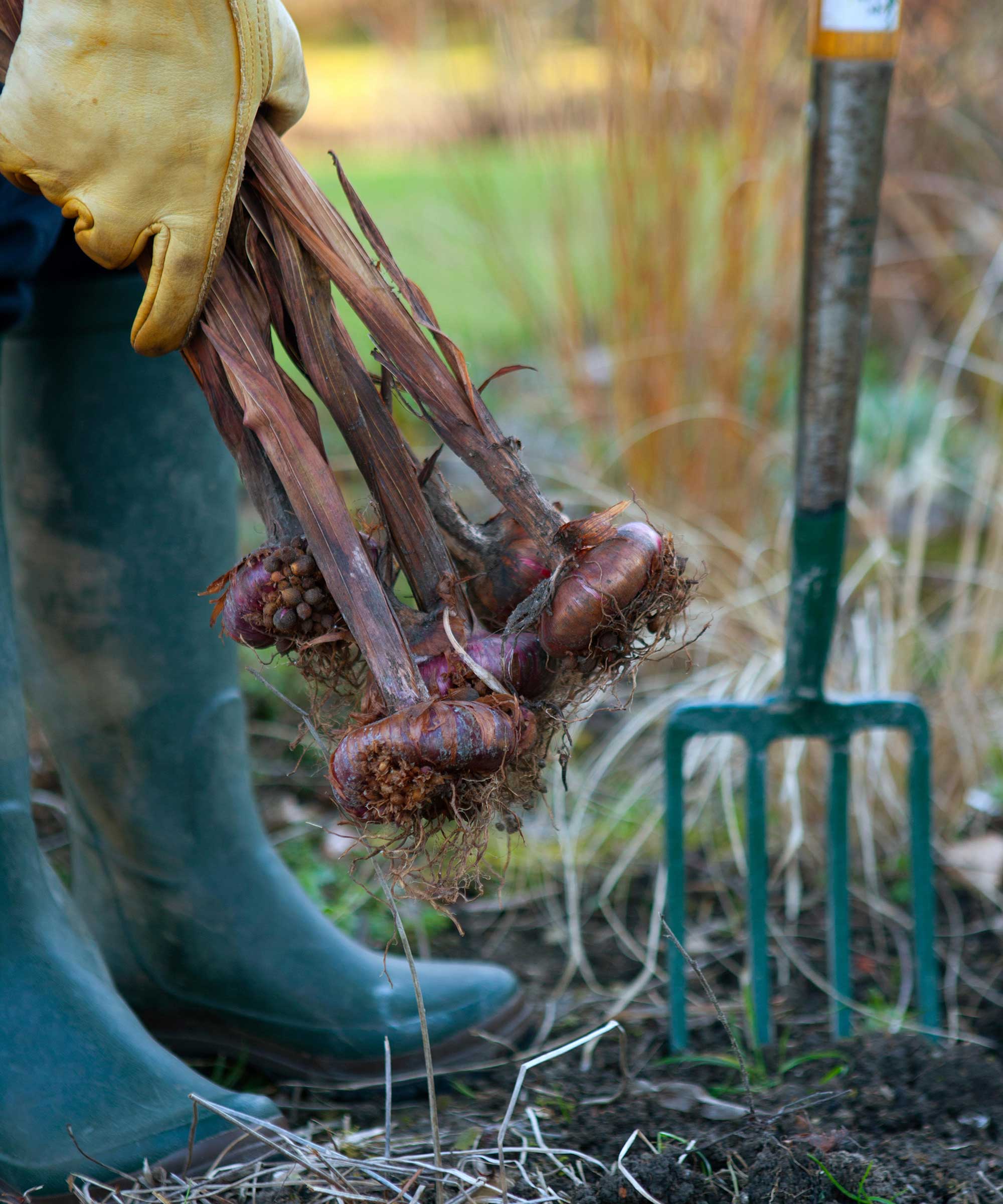
You can lift your gladioli bulbs for winter storage
'Many seasonal plants won't survive the winter weather, so be sure to read up ahead of the big chill to see what you can save,' says the gardening experts at The Greenhouse People.
Summer-flowering bulbs, such as gladioli and dahlias, can be dug up and put into storage over winter and then replanted the following year. 'These bulbs need to be kept indoors in a dark, cool space like a garage or shed until spring,' adds the team. However, some gardeners simply leave their summer bulbs in the soil and cover them with a good layer of mulch, which will generally suffice in milder climates. You can learn more about how to grow dahlias and what to do with gladioli bulbs after they've finished flowering in our guides.
'Some summer plants can even be transferred and potted indoors for a DIY houseplant,' The Greenhouse People continues. 'Geraniums, for one, can flourish inside in pretty pots – just make sure they're placed in naturally well-lit areas of your home.'
Other plants may need protecting with horticultural fleece or by being moved into a greenhouse. Our feature on how to protect plants from frost has more advice.
8. Sort out your plant pots
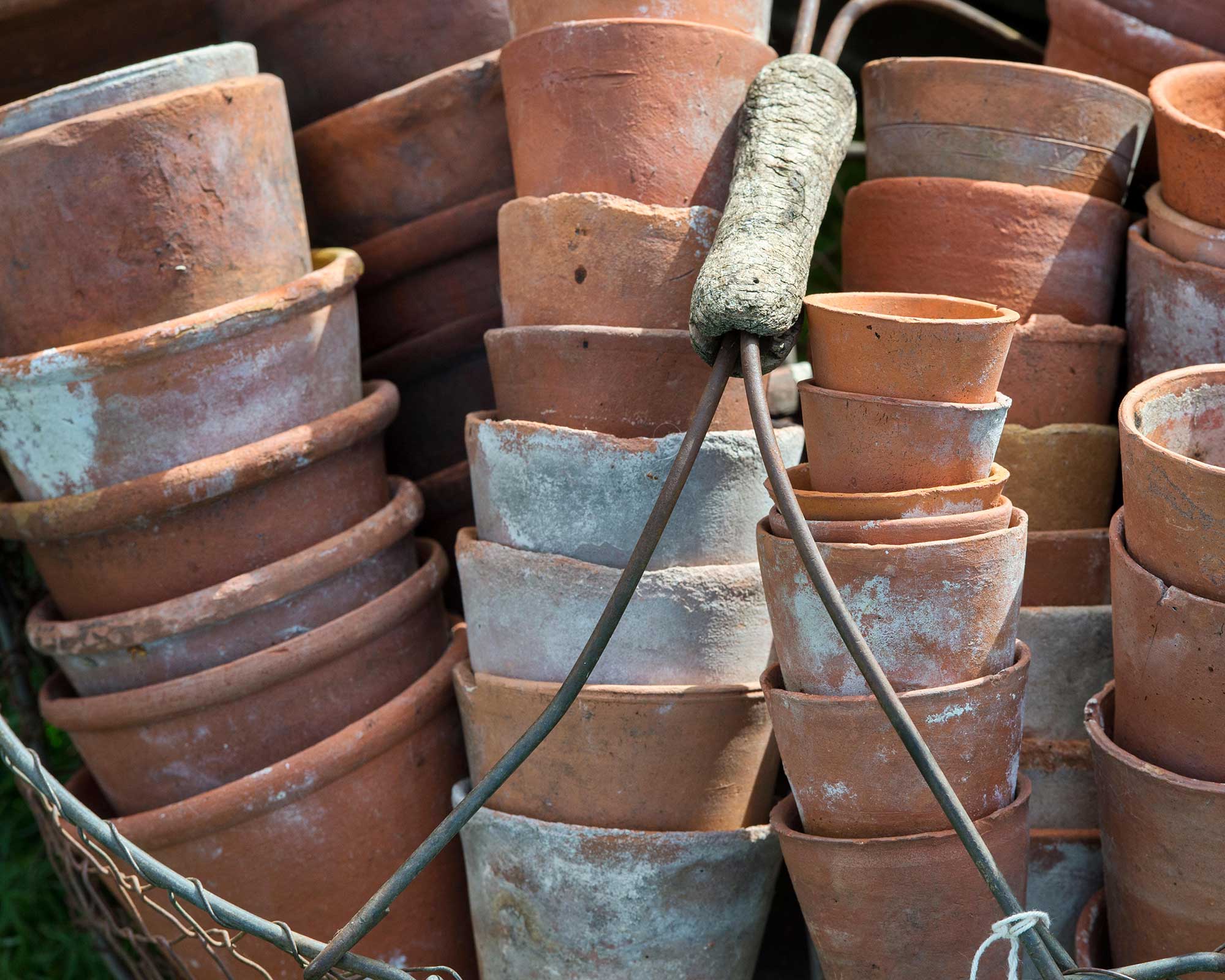
Clean spare pots and put them somewhere safe, dry, and ideally frost-free
Clear out old summer containers once the seasonal plants have gone over. Then, if you have storage room, clean your pots with a hose and put them in a safe and sheltered place ready for the warmer weather, as suggests The Greenhouse People.
'You could also use your favorite outside pots for some new houseplants to keep your green fingers flexed through winter,' they add. 'Just remember to cover the base of any outdoor pots with drainage holes with a shallow dish to avoid damaging spills – you can find ones made from recyclable plastic or natural materials like bamboo.'
Of course, you could also use your spare containers to plant up some new cold-weather displays with some of the best winter plants for pots.
9. Make the most of rainy weather with a water butt
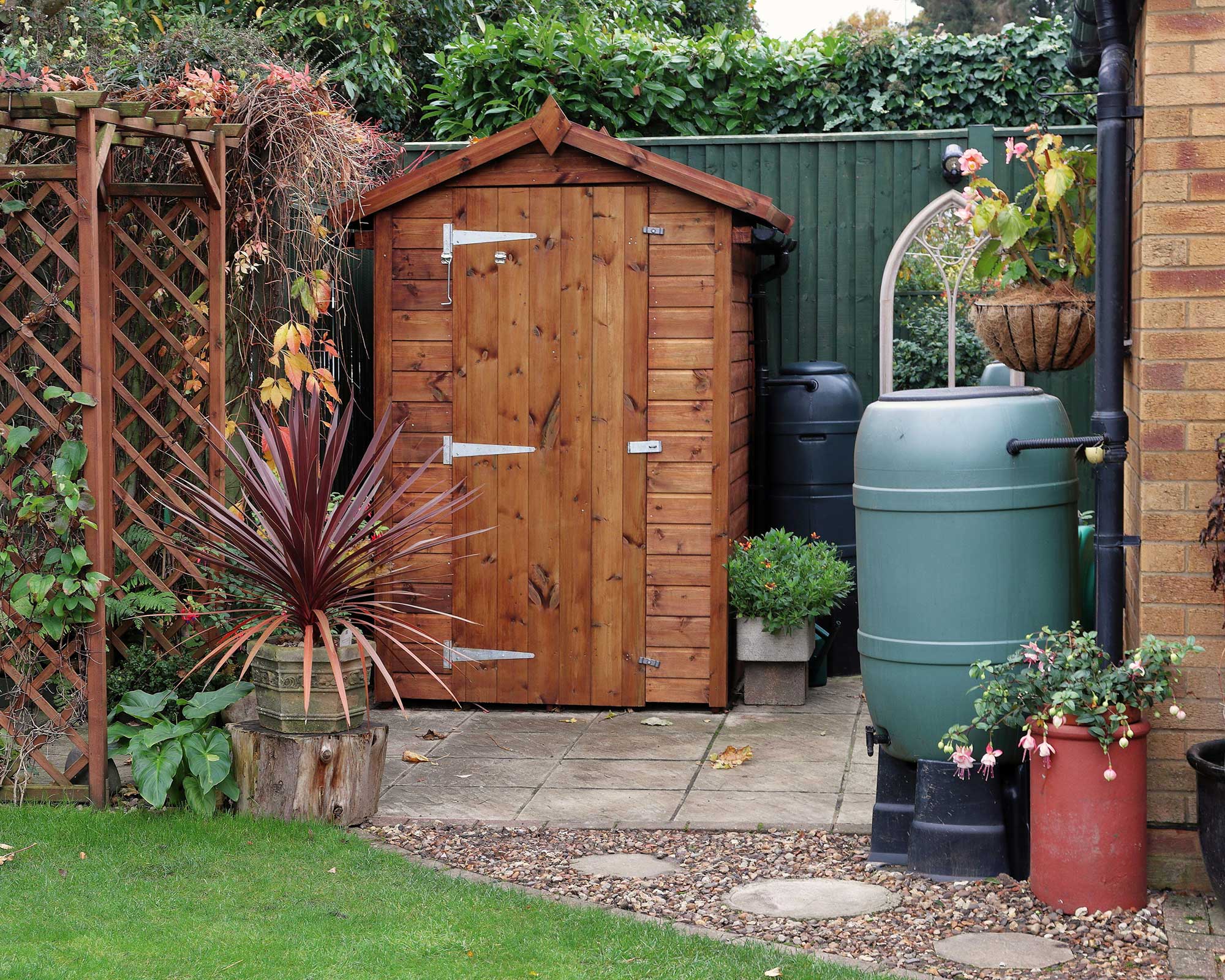
Up your eco-credentials with a water butt or two
Eager to create a more sustainable garden? 'Water butts are a great way to collect rain – a free and eco-friendly resource,' says the gardening experts at The Greenhouse People.
'As rainy days become more frequent, it's the perfect time to invest in a butt. The water can be reused on your garden and houseplants, or in your greenhouse. This is much better for plant health, as it is without purification, unlike tap water.'
10. Prepare your pond
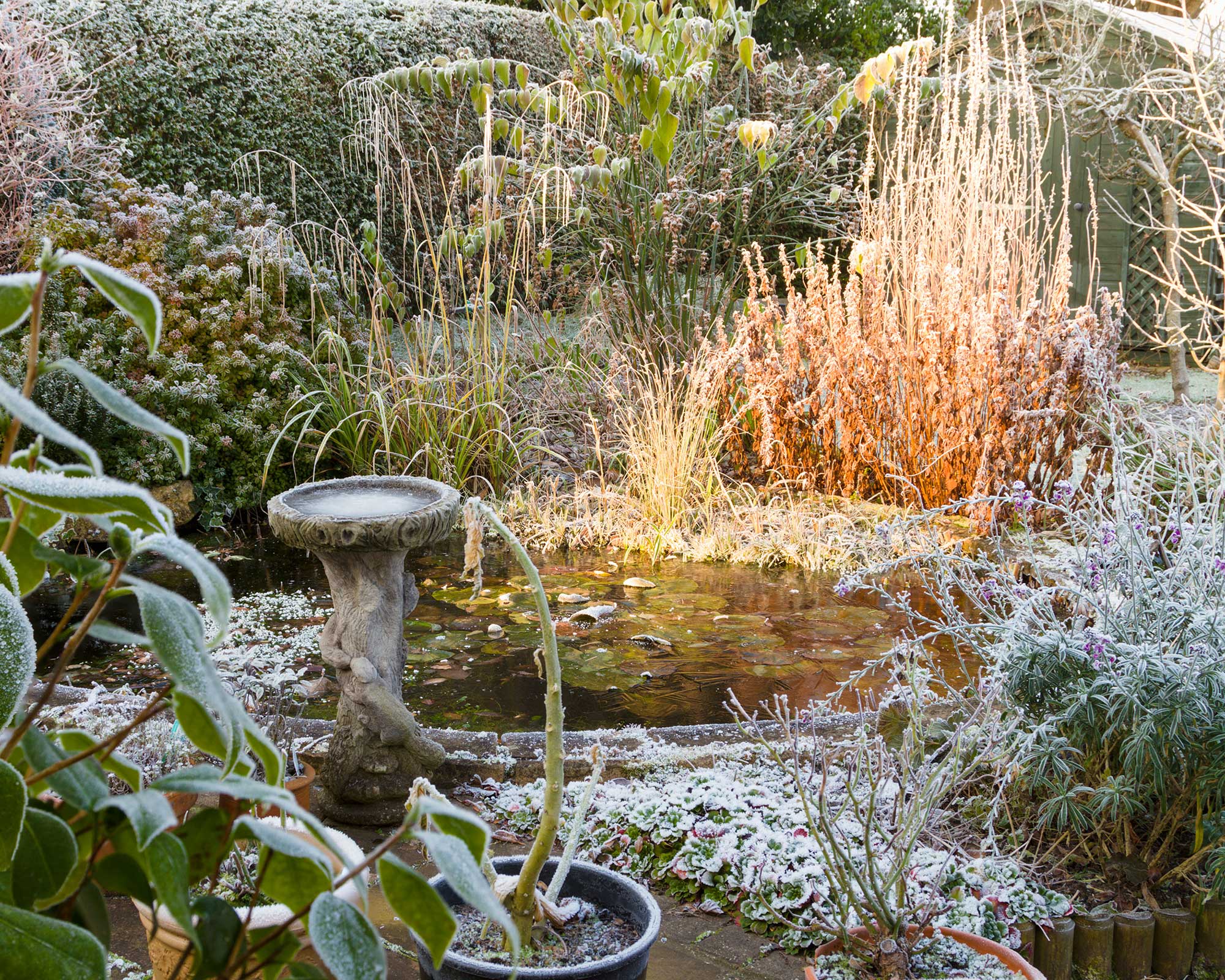
Clear out your pond before winter
If your pond or water feature hasn't been cleaned this year, autumn is the ideal time to tackle it, as says Calum Maddock of HomeHow.
'To prevent any clogs to the pipes, it's a good idea to clear out the leaves and then cover your pond with a net in late autumn,' he adds. Our guide on how to clean a pond has more useful advice.
'If there's fish in the pond, you will need to be extra cautious during cold winter weather to ensure that the water doesn't completely freeze,' Calum continues. 'Float large inflatable balls on the surface to prevent this from happening, or alternatively, use plastic bottles filled with stones. Check your water filter is functioning properly, as this also helps to stop the water from becoming still enough to freeze.'
Can you use black plastic bin liners to protect plants in winter?
If very cold temperatures are on the horizon, you might need to give some of your plants a bit of added protection. However, avoid reaching for black bin liners. Plastic is a non-breathable material so it can trap moisture, and it's no good at insulation. It's much better to use horticultural fleece, or even old cardboard boxes or blankets.
You can, however, use plastic bubble wrap around containers (but not around the plants themselves) to help prevent frost damage. Use fleece over the plants for extra protection.
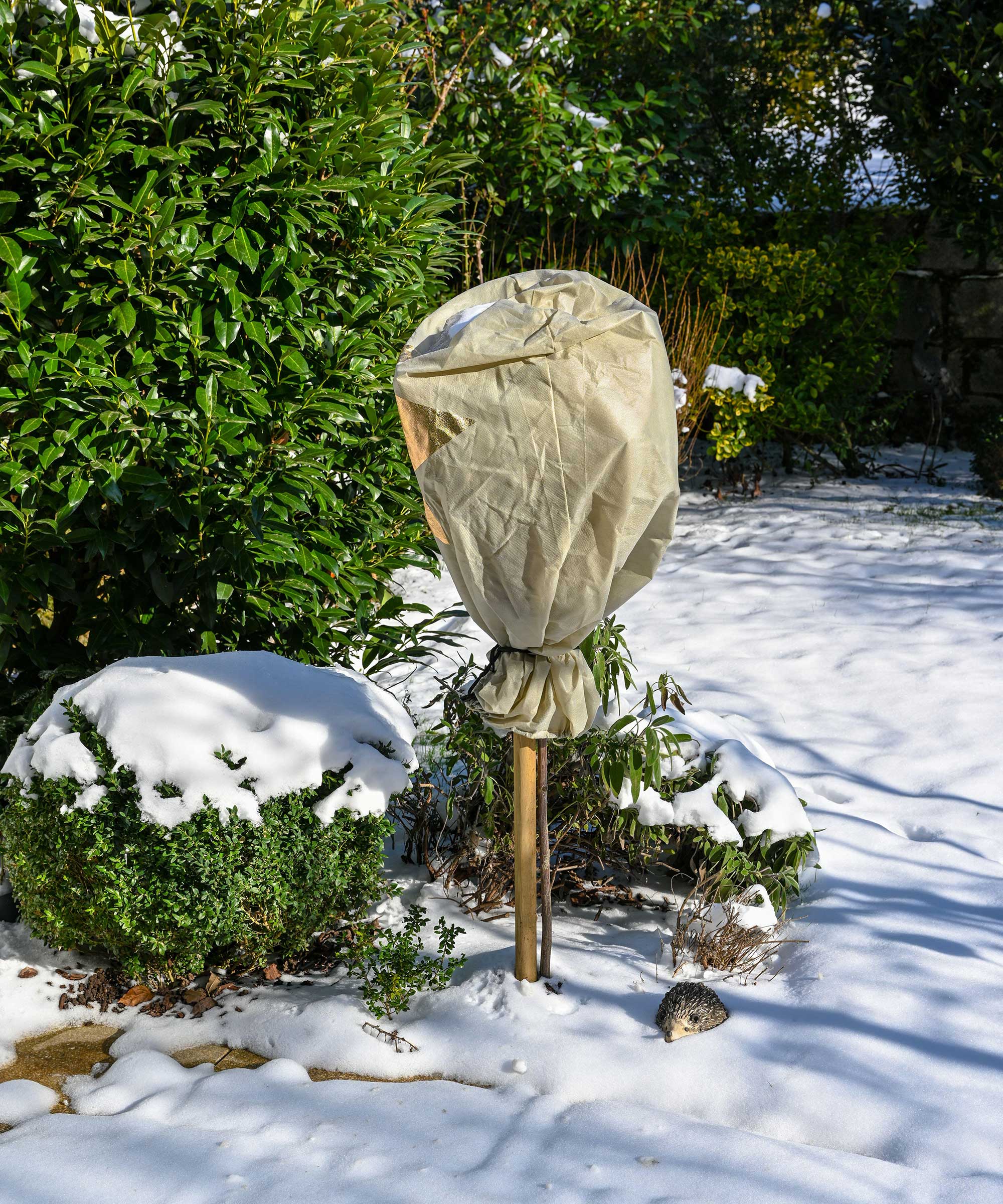
A rose bush protected against frost
When should you prepare your garden for winter?
It's all well and good knowing how to prepare a garden for winter, but you'll also need to know when. Well, late autumn is the best time to start thinking ahead. At this point, the summer blooms will have more or less faded, leaves will be falling, and more temperamental weather will be just around the corner.
You'll want to take care of most jobs, including lifting summer bulbs, before the hard frosts and other winter weather comes in. When it comes to pruning, the optimum time can vary according to plants. So, do a bit of research first before tackling all the trees and shrubs in your garden. Roses, for instance, should be left until February–March. You can find more tips on how to prune roses in our guide.

The garden was always a big part of Holly's life growing up, as was the surrounding New Forest where she lived. Her appreciation for the great outdoors has only grown since then. She's been an allotment keeper, a professional gardener, and a botanical illustrator – plants are her passion.


